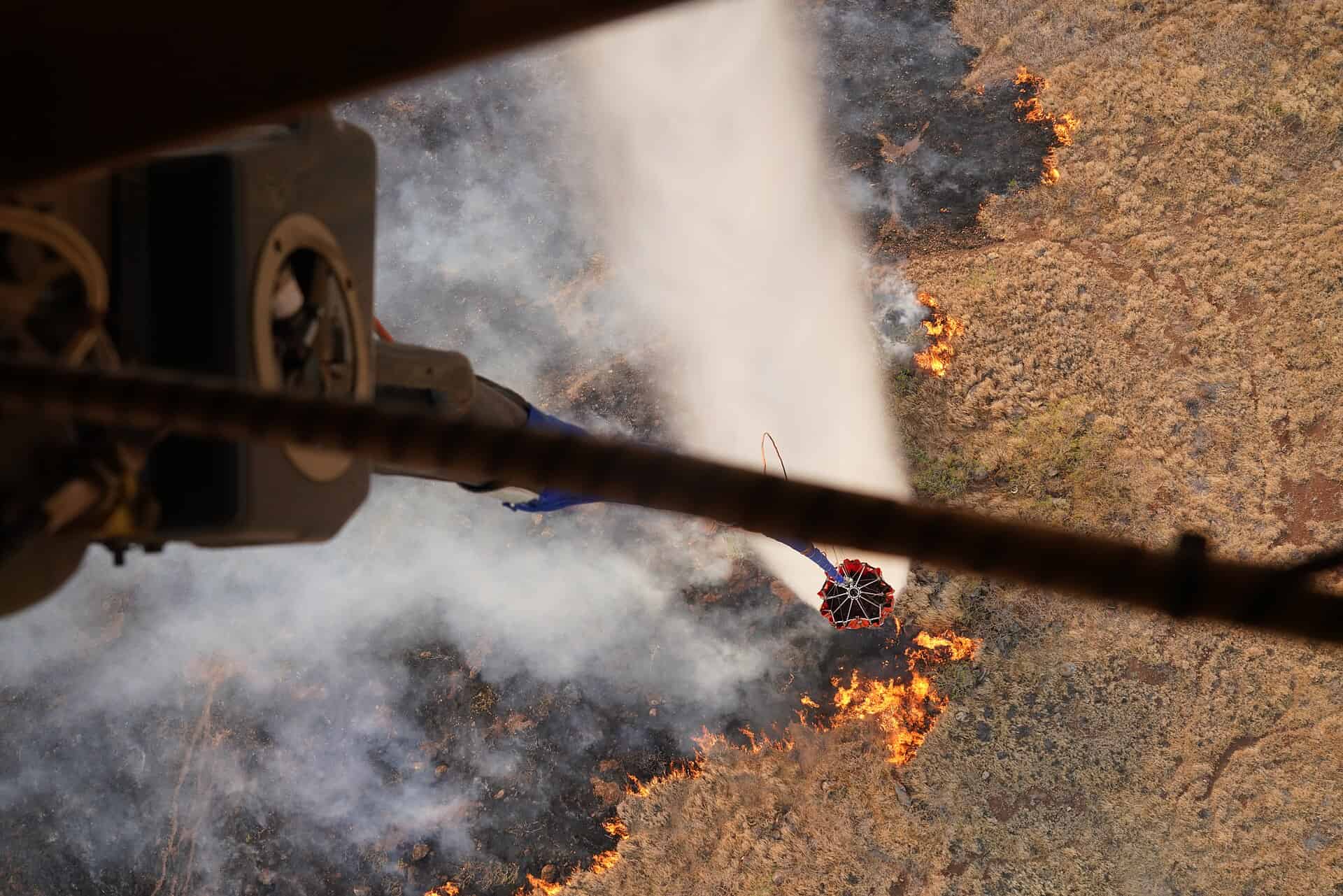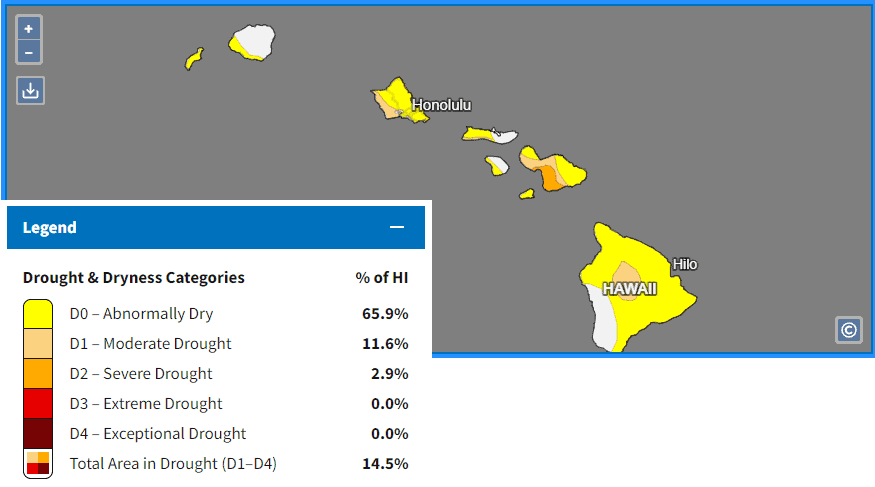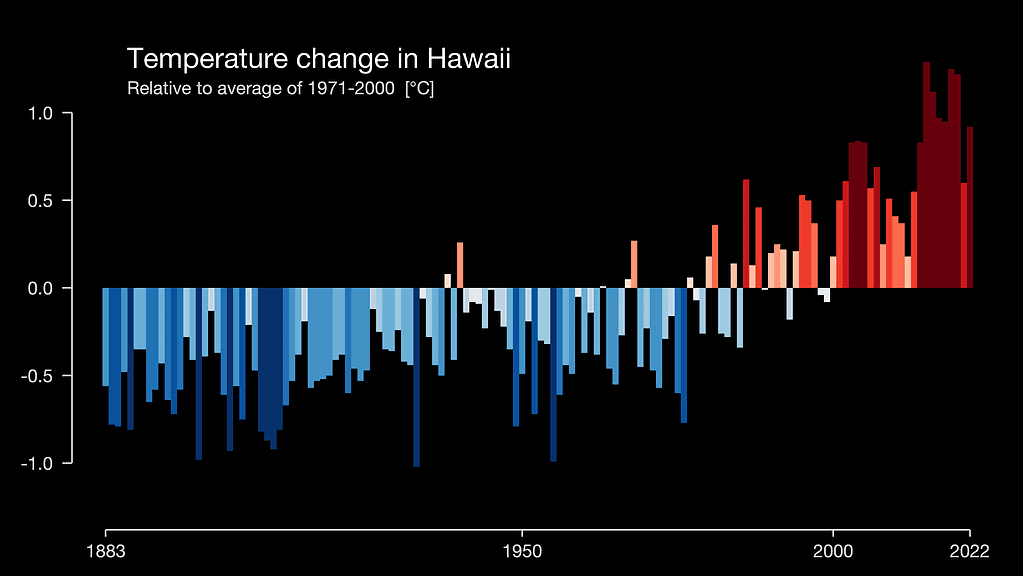Few things are scarier than massive wildfires — but massive wildfires on a volcanic island have to be one of them. The historic city of Lāhainā, on the island of Maui in Hawaii has been ravaged by fires. At least 55 people were killed by the fires. The fires also destroyed several historical buildings, charred a famous 150-year-old banyan tree, and at the time of this writing, have not been completely put out yet.
But although wildfires are not a new thing for Maui, these fires have quite likely been amplified by climate change.
“Hawaii does get fires but the scale of these are larger, more intense and faster-spreading than usual. The number of deaths and evacuations suggest it’s more than local emergency services normally cope with. This would therefore be classed as an extreme and unusual wildfire event,” said Douglas Kelley, a land surface modeler at the UK Centre for Ecology & Hydrology (UKCEH), commenting on the Hawaii fires.

They warned us
This type of tragedy was forecast by many climate models. Even more specifically, a 2015 study found that rainfall has been 31% lower in the wet season since 1990 in the monitored sites. The vegetation is also drying out, providing more fuel for fires — exactly what you’d expect with global heating. Another study from 2019 found that on the Big Island in Hawaii, climate change is dramatically changing wildfire patterns.
“Excess rainfall the year prior to fire occurrence increased fire risk across grasslands, and thus overall fire probability, more so than drought the year that fire occurred. Drying and warming trends for the region under projected climate change increased maximum values of fire probability by as much as 375% and shifted areas of peak landscape flammability to higher elevation,” the 2019 study concluded.
Overall, in Hawaii, the area burned annually by wildland fire has increased by 400% in recent decades. This year, large parts of Hawaii (including Maui) are suffering from drought or abnormally dry conditions, which are playing a role in the fires. Overall, two-thirds of Hawaii is classed as ‘abnormally dry’ and virtually all of Maui is suffering from some form of drought.

“Wildland fires are not unusual in Hawaii, there are occasional fires every year. This year’s fires, however, are burning a greater area than usual, and the fire behavior is extreme, with fast spread rates and large flames,” says Thomas Smith, Associate Professor in Environmental Geography, London School of Economics and Political Science.
Dry and windy
Essentially, fire behavior is driven by fuel, weather, and terrain. If the vegetation is dry and scorched (as you’d expect in a drought), it makes it worse. If you have higher-than-usual temperatures (especially overnight), it makes it worse. If you have strong winds fanning the fire, it makes it much worse. All these effects are converging in Maui — and all these are what you’d expect climate change to influence.
It’s always hard to link individual events to climate change, but temperatures in Hawaii have been rising steadily, increasing by more than a full degree centigrade since the 1950s. The cherry on top of this problem cake was a Category 4 hurricane that passed 300 miles to the south of Maui. This generated strong gusts of up to 80 mph along the dry slopes of the island that fanned the fire — but the precipitation from the hurricane was too far away to make a meaningful difference.

“A combination of the hurricane to the southwest and another strong low pressure system further to the west near Japan has contributed to sustained wind speeds of more than 35 km/hr or greater. This is unusual for this time of year, and will have been responsible for the very fast moving wildfires that have led to severe impacts, including deaths and widespread loss of homes,” added Smith.
But the hurricane alone, without the other conditions, is not enough, emphasizes Kelley.
“These events are often exacerbated by high winds, so it is plausible that the hurricane is having an influence. But ground conditions have to be dry enough for fires to spread, so that would suggest other factors than just the hurricane.”
Historic damage
Lāhainā means “cruel sun” in Hawaiian. The name is a reference to the hot and dry climate. The city was conquered by the first ruler of a unified Hawaii, Kamehameha the Great, in 1795. In 1802, the city became the capital of the Hawaiian Kingdom, a position it held until 1845. The city continued to hold a key role as colonization unfolded, becoming a central hub for the world’s whaling industry. It remained culturally and politically important continuously throughout Hawaii’s history.
In 1873, a banyan tree (Ficus benghalensis) was planted in a park. That tree grew and grew to this day, until it was charred by the fire. It’s unclear whether it will recover.
Satellite firm ICEYE has calculated that about 1,500 buildings have been destroyed, producing damages of billions of dollars, and the casualties are still being assessed.
The situation in Lāhainā is a sobering reminder of how climate change is not a distant or abstract threat but a clear and present danger. The fires in Maui, intensified by a deadly combination of dry conditions, increased temperatures, and anomalous weather patterns, are emblematic of a global phenomenon that we are all vulnerable to.
The scale of these wildfires is not confined to Hawaii but reflects a global pattern. From the wildfires of Australia and California to the increasing frequency and intensity of hurricanes in the Atlantic, the fingerprint of climate change is unmistakable and inescapable. We can still act to avoid the brunt of the damage. But time is ticking.






